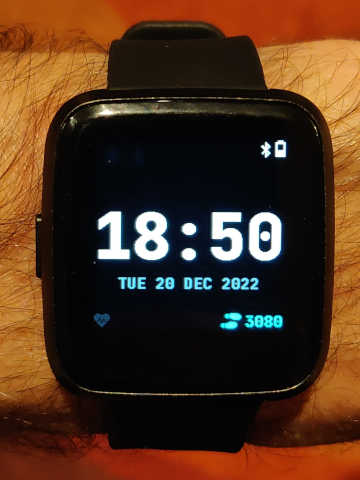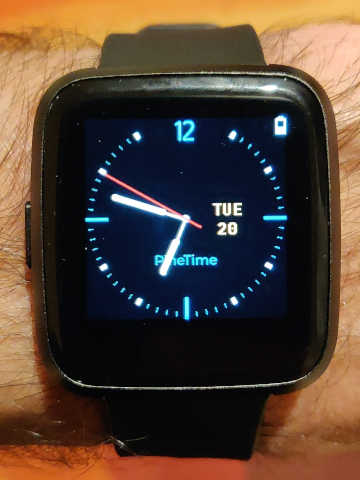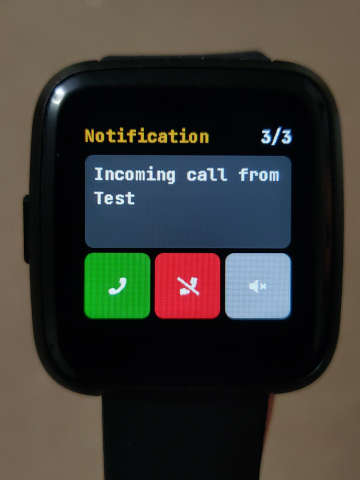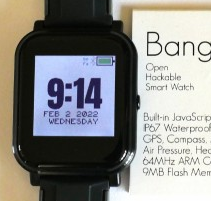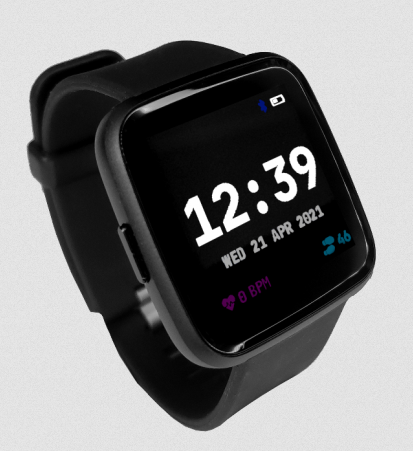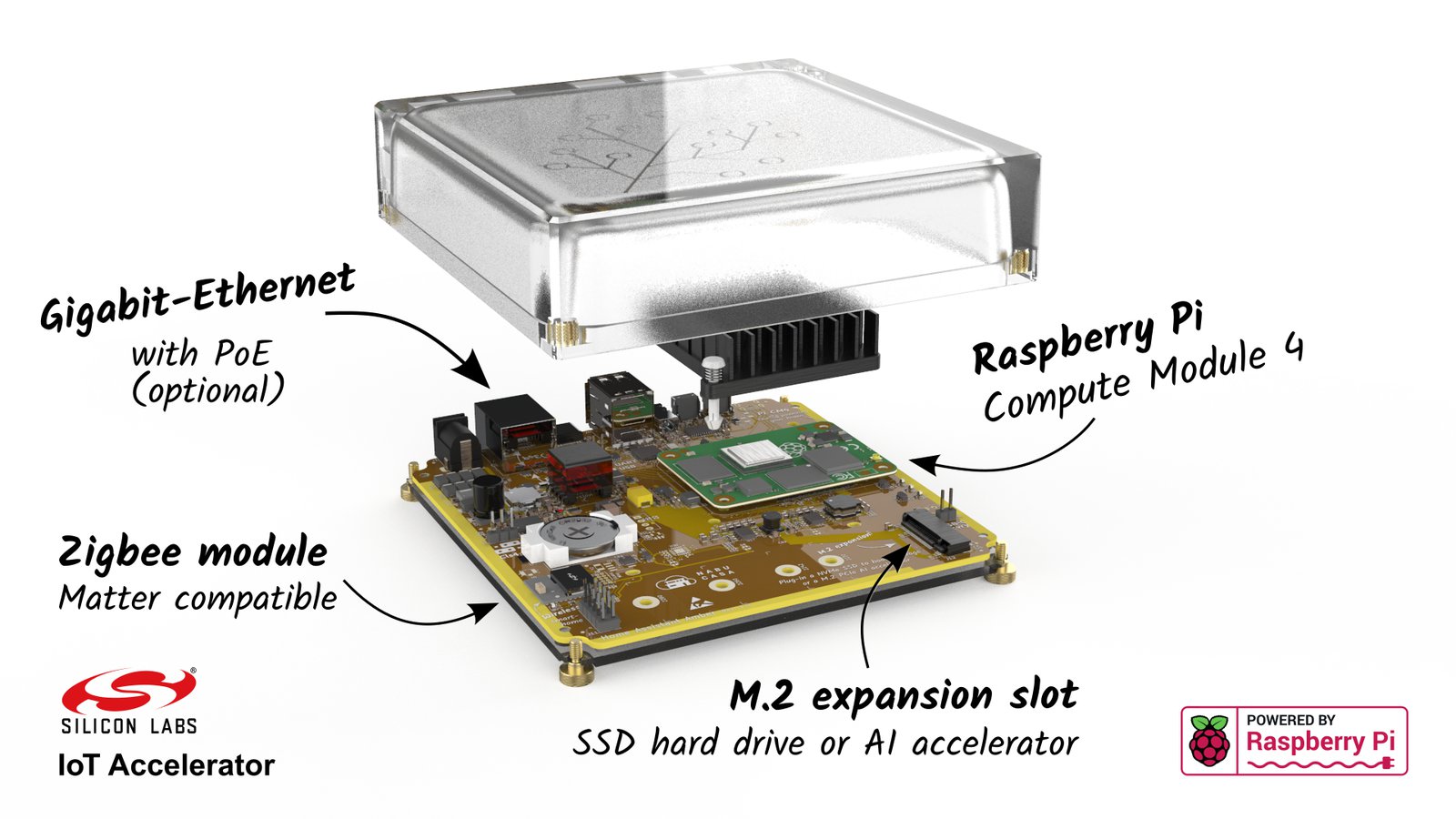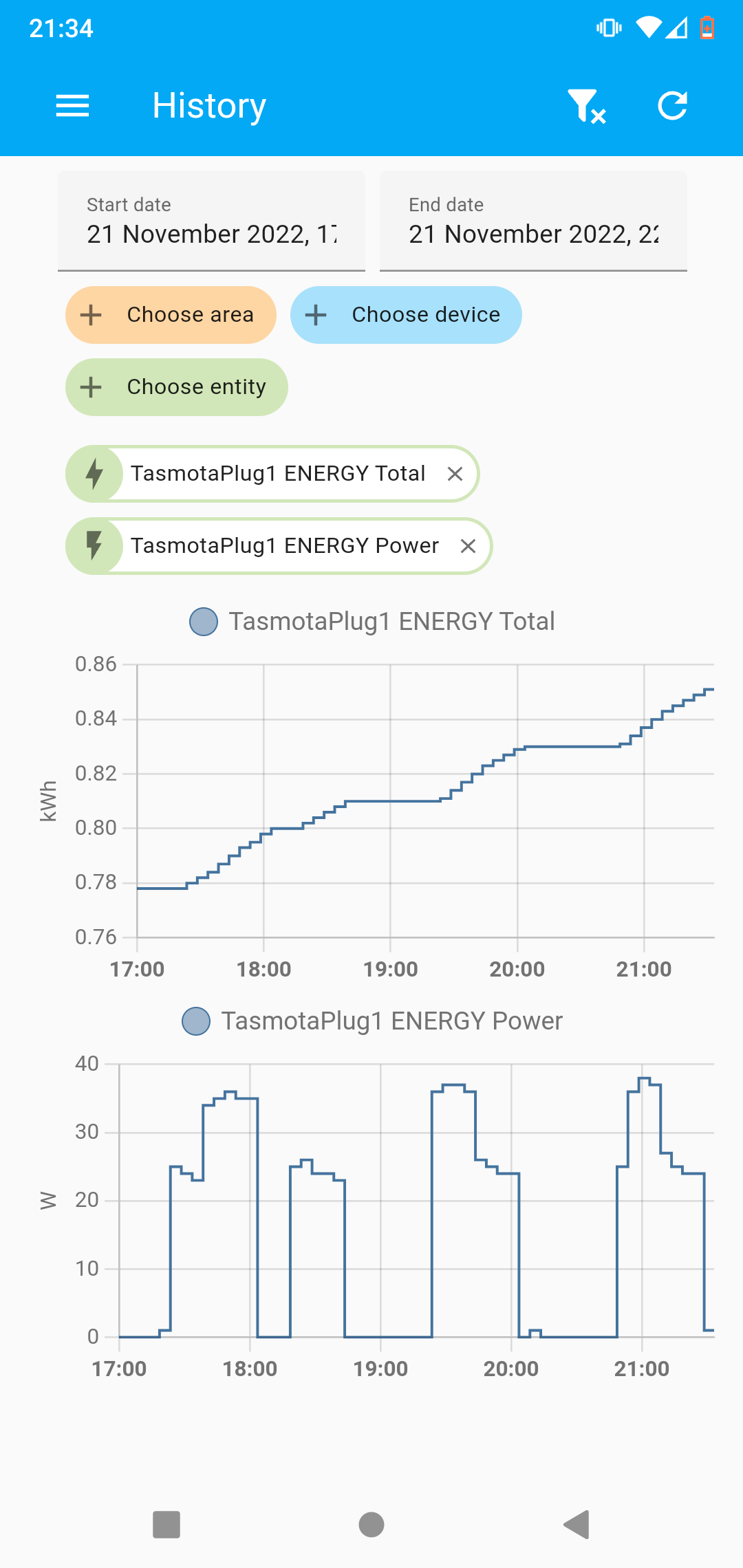Search
Items tagged with: cloudFree
PineTime Smart Watch -- Awesome Open Source
My smart watch is open source. Awesome!
PineTime from Pine64 (product | shop | wiki)
The PineTime is made of open-source hardware and open-source software.
Read a detailed review by It's MOSS.
Being created in order to inspire open development, Pine64 sell it directly for a very low price. It comes as a working product ready to use. For developers, the similarly priced development kit is recommended.
I haven't worn a watch for decades, but I am so happy this exists, I have ordered one.
Actually, to be candid, I ordered one because I want to be more intentional about promoting open source products. We can tell our friends we don't need Apple or Google owning us. But telling is weak. Showing is strong.
A few weeks later... here it is! Woohoo!
I installed GadgetBridge from F-Droid on my degoogled Android phone, and connected it. Upgrading the Infinitime firmware from version 1.6.0 as supplied, to the then current version 1.11.0, went smoothly.
What Does it Do?
It tells the time. It notifies me, with vibration and on-screen display, of notifications shown on my phone. It can control a music player on my phone, start/stop, track skip, and volume control. Those are the functions I find useful, at least initially.
There's an intriguing “navigation” screen, as in map directions. I have not been able to make it do anything, and on searching online found a note that it “only works with PureMaps/Sailfish OS”. That's a pity. I wonder if it can and will be made to work with the awesome open source Organic Maps.
Maybe you are more interested in the step counting and heart rate monitoring. There are also some little gadgets like timers, scribbling, metronome, and mini-games.
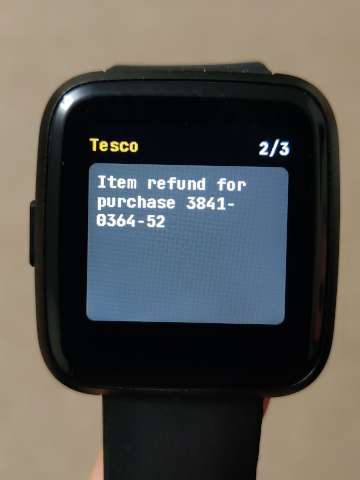
Where Next?
This is a hacker's watch, a hackable watch. Infinitime OS is not the only OS it can run. There is also Wasp-OS, and instructions on how to switch between Infinitime and Wasp-OS.
On either operating system, it's possible to add new functions. I would like to learn how to do so. For instance, I would like to monitor and control my smart home gadgets.
Alternatives
Other smart watches exist with open-source hardware and software designs. Some are hacker-only projects, which you can build yourself, such as Bellafaire's and more that we can find in round-ups such as this and this.
Here are the ones I know that are available to buy.
- Bangle.js reviewed in MagPi magazine, Feb. 2022
- Watchy by SQFMI
And finally, I came across an interesting project by “dcz” who has begun making a bike “computer” based on Bangle.js watch hardware with custom software: Jazda.
This article is part of my Open Source Gadgets series.
#fossGadgets #cloudFree #degoogled #awesomeFOSS #openHardware
Feedback:
- email me:
julian@foad.me.uk - matrix me:
@julian:foad.me.uk
Donations gratefully accepted
Feedback:
- email me:
julian@foad.me.uk - matrix me:
@julian:foad.me.uk
Donations gratefully accepted
All I Want for Christmas is... a Smart Phone?
“What's it to be: Android or iPhone?”
Actually, NO! There is another way.Time I Learned: there are freedom-respecting phones.
I'll tell you which one you need.
(For the literal minded: It's just a title. I don't really think Christmas is about buying gadgets. This article is about freedom in technology.)
What's the problem?
What's so bad about choosing either Google or Apple?Many of us today are increasingly concerned about the vendor lock-in, advertising and data mining perpetrated by Apple and Google. They are so pervasive that it's hard at first to see all the avenues of social human interaction and creativity in which we could be harnessing the power of our computers and our electronic connection to others, all these avenues from which Big Tech have cut us off, as they steer us through their own product pathways according to their own commercial objectives.
In short, we are carrying around general purpose computers but we are artificially locked in to using their power only within the vendor's own playground. Read: The General Purpose Computer in Your Pocket. Those mega-corporations ensure everything we do is steered toward making their advertisers and shareholders richer: attention grabbing, commercial subscriptions, ads and so on. Not towards what's best and nicest for us as people.
We've been subjected so completely to their way that it's hard to imagine any other way. Hard to see that the nuggets of convenience we'd have to give up would be as nothing compared to the adventures we'd gain by switching. We can't see the wood for the trees.
Yet, the alternatives are here. We don't have to accept it's a choice between a rock and a hard place.
What we can do instead is choose tech that unlocks the power of these personal computers we carry around, and lets us use them for purposes that make no profits but enhance our own social lives. Gentle technology. Small Tech as opposed to Big Tech.
Once we make the leap and begin exploring the previously untapped possibilities, we begin to appreciate what it feels like to be released from Big Tech's constraints. It's not a stretch to say those companies had pressed us into their servitude, and now we can be free. That's what I'm feeling, and I want us all to have that opportunity.
Which Freedom-respecting Phone?
The one that stands out as best suited for ordinary people is built upon a deGoogled version of Android:
- Murena /e/OS smartphones
- deGoogled, Android-compatible phone
- with deGoogled “cloud” suite: email, docs, storage, etc. (free or €2~20 /month)
- choice of phone models (€300~600) including Fairphone
Being freedom-software (open source), the maker guarantees your freedom to use the tools they provide or change to others. What does that mean in practice? For example, if you don't like the terms and conditions of the Murena cloud software suite, you can use a different one provided by someone else, be it an independent commercial provider, or run by your school or club, or at your best techie friend's home. And then you don't even need a Murena account.
How is this degree of freedom possible? First, with the slogan “my data is my data”, Murena is committed to these principles. It was founded by Gaël Duval, the creator of Mandrake Linux. Second, in contrast to Google's Android which merely contains some open-source software components, this technology stack is designed around open source principles. Their cloud service is not only based on Nextcloud, but is designed to be compatible and interoperable with similar services run by lots of other providers and individuals. Together, and in stark contrast to the Big G and the Big A, these mean there is neither a practical lock-in nor a legal lock-in.
How to get one?
- The no-fuss solution: buy one
- The techie friend option: ask the friend to set it for you on a second-hand phone.
“But I'm Not Average”: Other Freedom Phones
If you are not the average person, or if you want to learn more about the alternatives, read on.I recommend Murena for the average person because their offering is so inclusive: the phone hardware, the cloud services, the freedom to take or leave parts of the system and adapt it to your needs, compatibility with most smart phone apps, and working in a way that is broadly familiar to a lot of people already. I hope we will soon see other providers like them offering a no-fuss all-included solution too.
These alternatives will appeal more to techies and to people with particular preferences or needs, and the ability to spend a bit more effort instead of buying an all-in package. With most of these, you or a techie friend will need to do one or more of: install the operating system software on a suitable phone, setting up any “cloud” services you want, or using apps that are currently less mainstream.
That said, these are quality and important alternatives.
Purism in particular is an outstanding company dedicated to making freedom and privacy centred devices. If their Librem phone isn't for you, check out their laptop, server, security key.
- Purism's Librem 5
- Linux-based phone OS
- convergence with Linux desktop: run desktop apps on the phone, or plug into a monitor and use as a desktop computer
- company dedicated to software and hardware freedom and privacy at all levels, and working with wider FOSS community
Shiftphones in Germany sells modular repairable phones (and laptops, headphones, etc.). While their current SHIFT6mq comes with a Google Android pre-installed, the interesting thing is they offer an easy and built-in way to install an “upgrade” to a degoogled android version. Much easier than degoogling any other phone.
- Shiftphone SHIFT6mq detailed Review including thorough instructions on degoogling it, and suggestions for additional settings and apps.
Iodé is a small company in France selling phones pre-installed with deGoogled Android, with extra privacy features.
- Iodé's new or refurbished phones
- deGoogled, Android-compatible phone
- choice of phone models (€210~730) including Fairphone
For techies, there are more deGoogled Android distributions that you can download and install yourself on a suitable phone:
The phone operating systems from the vendors mentioned, all being based on freedom software, can be self-installed too:
(Where are the iOS-based freedom phones? That's not going to happen: Apple locks its users into its own walled garden completely. See The Neighborhood and The Nursing Home.)
What Does Julian Use?
Personally, for myself and family I am currently using LineageOS-for-MicroG. I chose that option because I am a techie, experimenting with the various options on a budget, so I tended towards those I can install myself on a wide range of old and new phones. And because it is quite close to mainstream Android so a majority of mainstream apps run on it. And because my less techie family members needed the reassurance of being able to continue using their familiar Google apps to begin with, and only gradually migrating to freedom-software, one app at a time when they are ready, from Chrome to Firefox for example.I have experimented with others. I really admire what Murena is doing, and have self-installed /e/OS on an older phone. I am considering switching over to it on my main phone. I would want to set up my own compatible cloud service rather than using Murena's, because I will not compromise on using my own domain name as the key to my own data services. I believe Murena and other companies offering “your own data” services should for this reason always offer “bring your own domain”. For now, the situation is that Murena's service is open source with the source code repository ecloud-selfhosting in “beta” status. (It is to be congratulated also that they host their software forge on their own domain rather than using the anti-freedom github.)
This article is part of my Open Source Gadgets series.
#fossGadgets #android #degoogled #lineageOS #eOS
Feedback:
- email me:
julian@foad.me.uk- matrix me:
@julian:foad.me.ukDonations gratefully accepted
Feedback:
- email me:
julian@foad.me.uk- matrix me:
@julian:foad.me.ukDonations gratefully accepted
Beautiful, Secure, Privacy-Respecting Devices - Purism
Purism makes premium phones, laptops, mini PCs and servers running free software on PureOS. Purism products respect people's privacy, freedom, and securityPurism SPC
Best Open Source Smartwatch 2021 - Learn How to Hack your Smartwatch
Here are some of the best open source smartwatch in the market. Pick from different smartwatch with open source hardware and software, see the listJo Di Calivo (SmartWatch Specifications)

A Freedom-Respecting Smart Home
Automating our lights, security cameras, all the Things? We'll be needing some IoT Gadgets and a home automation system.
“Which brand? Amazon Alexa or Google or Apple HomeKit?”
NO! Big Tech makes technology that best serves Big Tech. We don't have to accept it, once we learn there's an alternative.
Time I Learned: our smart home can respect our freedom.
What's wrong with mainstream IoT?
Their system works beautifully. We can see it in their adverts. What are we missing? Let's see. These cool and pretty looking mainstream IoT devices are overwhelmingly sold with “cloud” connectivity. “Control it with our App!” It sounds good. It's certainly convenient at first.
Now, what does “cloud connected” imply? It implies our command to turn our light on goes out from our phone, over the Internet, to “the cloud” which just means somebody else's computer, where it's processed through our account on their system, and from there the command comes back to our light which then turns on. Ta-da! And our security camera feed shows up in our monitoring page on their computer system. Just like they showed in their adverts.
Except when it doesn't. Except when the internet is slow, we wait, and then after a while our light turns on. Except when they mess up and show our private camera feed to some other customer and theirs to us. (Yes, that happened.) Except when their communications and their computers are poorly secured and get hacked. (Yes, lots of times.) Except when their company goes bust overnight and all our devices stop working. (Yes, that happens too.)
When we use the vendor's app and “cloud connected” control, it means we are renting the use of our device as a service from the vendor. The vendor permits us to use the hardware we bought, but only through the intermediation of their servers. We can use it in ways they allow, for a time they determine, until they discontinue that service or go bust or require us to upgrade or pay extra or watch adverts or agree to new terms. Whatever they want. We “bought” it but we don't own it. Or we could say we own the bare hardware but we don't own the functioning product.
What's the Solution?
The alternative is that we can use IoT devices that are locally controlled, that depend only on our own local network, and therefore can respond fast no matter what our Internet connection is doing, and remain solely under our own control no matter what happens to the Vendor.
My recommendation for a home automation control centre:
Home Assistant <home-assistant.io>
Home Assistant lets you control and monitor everything — doorbells, lights, cameras, action! — and wrenches back your local control over Big Tech branded devices from Amazon, Google, Apple and the rest.
“Open source home automation that puts local control and privacy first”
Depending on your level of technical expertise there are different ways to obtain Home Assistant. For ordinary people looking for the simplest and most reliable way, I would recommend buying a tiny stand-alone hardware device with the software pre-installed. Currently the best option would be the “Home Assistant Yellow” pictured above. If you buy the complete version, it contains a Raspberry Pi and also a Zigbee communication interface which talks wirelessly to certain home automation devices. (At the time of writing, Home Assistant Yellow is available to pre-order.)
On the other hand, with it being freedom software, you or your techie friend could set up Home Assistant on pretty much any computer such as a laptop or a Raspberry Pi. That would be a good option for experimenting with it.
For lots of information about using Home Assistant, listen to The Self-Hosted Show podcast.
For recommendations on security cameras, also consult The Self-Hosted Show.
For your smart switches, plugs, lights, temperature sensors etc.: mylocalbytes.com (UK) or cloudfree.shop (USA).
What About Other Options?
My recommendation for Home Assistant is what seems to me the best solution for most ordinary people, friends and family. Techies and the curious should take a look at these two other freedom-respecting home automation hubs.
For those building software, Mozilla WebThings is an important project providing “an open platform for monitoring and controlling devices over the web”.
What Will Julian Do?
At the time of writing I am just beginning my home automation. My first IoT device is:
- a “smart” plug/socket (switching, power monitoring)
Plug a light into the smart plug. Click! It's on. Click! It's off... on, off, on, off. That's fun. OK, that's enough of that.
Plug my fridge into the smart plug: it tells me the power consumption when the fridge motor is running, when it isn't, and the total energy and average power over a day. That's interesting. Click! It switches off... oops, didn't mean to do that. Keep it on.
There are lots of ways to run Home Assistant. The easiest way for me to start was an almost one-click install of Home Assistant on YUNoHost. If I outgrow that, I can run it in its own virtual machine (VM) on my ProxMox VM server. Longer term, I have been hearing that people get used to their home automation and expect it to be always available, a permanent fixture of the house. To improve reliability, by taking my general-purpose servers out of the equation, I would seriously consider moving it to a Home Assistant Yellow self-contained physical device.
On my phone I installed the official Home Assistant companion app from f-droid. As well as providing access to the HA dashboards and configuration, this app also adds a Home Assistant integration that monitor's the phone's power stats (battery level, etc.) and optionally lots more kinds of statistics.
Now I have got it up and running and kicked the tyres with my first integration, I might try:
- “smart meters” for my electricity and gas supply (energy data)
- garage door sensor (turn on light, alert when I left it open)
- voice assistant / smart speaker: Hopes and promises for open-source voice assistants in LWN summarises the landscape of FOSS smart speakers, the most promising being Rhasspy which is being brought in to Home Assistant, and OpenVoiceOS (OVOS) which is taking over from where Mycroft was going
- solar panels or a heat pump (may provide energy data)
Related
- A talk, Practical Computerized Home Automation by Bruce Momjian at FOSDEM'23. “Home automation is an elusive technology — often desired, rarely achieved. This talk explores a successful ten-year home automation deployment, outlining the challenges that derail many attempts. It will cover technology choices, programing basics, and a dozen successful applications.”
- A talk, Challenges in Home Energy Management by Markus Storm at FOSDEM'23. “How to best use your own PV-generated power ... deploying openHAB ... covering the most power intensive use cases of a household: EV charging, heat pump and white goods operations.”
This article is part of my Open Source Gadgets series.
#fossGadgets #cloudFree #smartHome #degoogled #awesomeFOSS #openHardware
Feedback:
- email me:
julian@foad.me.uk - matrix me:
@julian:foad.me.uk
Donations gratefully accepted
Feedback:
- email me:
julian@foad.me.uk - matrix me:
@julian:foad.me.uk
Donations gratefully accepted
What to Give: Tech Gadgets that Respect Our Freedom
“All I Want for Christmas is...” a device that works as a tool for me not as a tool that continues to work for its maker
We love a new tech gadget. What will it be? It's all about “smart” these days.
- A smart watch (full article)
- A smart phone (full article)
- A smart home (full article)
- full of IoT things: doorbell, lights, sockets, security cameras
What do You Mean, “Freedom-Respecting”?
Today there's a huge gulf between the Big Business approach and the freedom-respecting approach.What do I mean by “freedom respecting” and why would I care this much? After all, we might ask,
“Dear Julian, we know you love Open Source, and we know those Big Tech prorietary vendors are out to get us with their vendor lock-in, their advertising, and their data collection. Yes it's annoying but it's how things are in today's world. We put up with it because we just want something that's easy, that does what we want. They make that stuff, and it works. Why are you still getting so upset about it?”
For insight, read or listen to The Future of Computing and Why You Should Care and The Neighborhood and The Nursing Home.For some of my personal recommendations, read on. There is a longer article linked to each one.
Smart Watch
There's an open source smart watch → the PineTime (main | shop | wiki) from Pine64
- Both its hardware and software are open source
- A review | DDG search for “pinetime review”
- Being created in order to inspire open development, Pine64 sell it directly for a very low price
- There is working software so you can just use it. For developers, there is a development kit
→ Read the full article: PineTime Smart Watch — Awesome Open Source
Smart Phone
“What's it to be: Android or iPhone?”
Actually, NO! Apple and Google both press us into their servitude with their extreme vendor lock-in, advertising and data mining. We don't have to accept it, once we learn there's an alternative.
What to buy:
- Murena /e/OS smartphones
- deGoogled, Android-compatible phone
- with deGoogled “cloud” suite: email, docs, storage, etc. (optional, free or €2~20 /month)
- choice of phone models (€300~600) including Fairphone
Being freedom-software (open source), the maker guarantees your freedom to use the tools they provide or change to others. What does that mean in practice? For example, if you don't like the terms and conditions of the Murena cloud software suite, you can use a different one provided by someone else, be it an independent commercial provider, or run by your school or club, or at your best techie friend's home. And then you don't even need a Murena account.
→ Read the full article: All I Want for Christmas is... a Smart Phone?
Smart Home Automation
Automating our lights, security cameras, all the Things? We'll be needing some IoT Gadgets and a home automation system.
Recommendation for home automation control centre:
- Home Assistant controls and monitors everything
“Open source home automation that puts local control and privacy first”
There are different ways to run Home Assistant. You can buy it as a tiny device pictured above, code-named “Home Assistant Yellow”. Alternatively, because Home Assistant is freedom software, it's open source so your best techie friend can set it up for you on more or less any old computer you have, if you prefer.For lots of information about using Home Assistant, listen to The Self-Hosted Show podcast.
For recommendations on security cameras, also consult The Self-Hosted Show.
For your smart switches, plugs, lights, temperature sensors etc.: mylocalbytes.com (UK) or cloudfree.shop (USA).
→ Read the full article: A Freedom-Respecting Smart Home
#fossGadgets #openHardware #awesomeFOSS
Feedback:
- email me:
julian@foad.me.uk- matrix me:
@julian:foad.me.ukDonations gratefully accepted
Feedback:
- email me:
julian@foad.me.uk- matrix me:
@julian:foad.me.ukDonations gratefully accepted
The Future of Computing and Why You Should Care – Purism
Purism makes premium phones, laptops, mini PCs and servers running free software on PureOS. Purism products respect people's privacy and freedom while protecting their security.Purism SPC
openHAB
openHAB - a vendor and technology agnostic open source automation software for your homeopenhab.org

